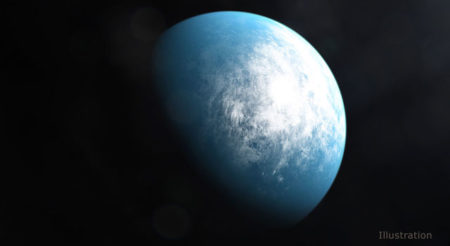
January 7, 2020 – It’s always good to keep your options open when you are ruining your own home planet. I’m not sure what other take away one can have from the latest discovery by NASA’s Transiting Exoplanet Survey Satellite, known by its acronym TESS.
TESS was sent aloft with the specific job of finding Earth-like planets orbiting nearby stars. And by nearby I’m talking tens to hundreds of light-years away. If you need a reminder, based on current conventional propulsion technology, to get to one of these potentially habitable alternatives to Earth we would be traveling for a period longer than the time it has taken us to evolve from hunter-gatherers, to where human civilization is today.
A light-year spans 10 trillion kilometers (6 trillion miles). To make it to our nearest stellar neighbour, Proxima Centauri, 4.24 light-years away, with current technology the time expended would exceed 80,000 Earth years.
This latest NASA Earth-twin discovery is TOI 700 d, the fourth planet circling a red-dwarf star, 100 light-years away. That’s 24 times further than Proxima Centauri. So when you do the math, our journey to this new home would take over 1.9 million Earth-years. Looking back, we humans weren’t even around 1.9 million years ago. Modern homo sapiens is less than half that age.
Nonetheless, NASA seems determined to tell us about Earth-twin possibilities in our galaxy using TESS, its predecessor, Spitzer, and the future James Webb telescope to tantalize us about planets lying within the Goldilocks’ Zone of distant stars where we could conceivably survive.
TOI 700 d and its star don’t sound much like our Solar System and Sun. TOI is 40% the Sun’s mass and half its surface temperature. Three planets, so far, have been detected in orbit around it which makes me wonder why the “d” designation. Shouldn’t it be TOI 700 c? Apparently not because the star gets the default “a,” with the planets being numbered from “b” onward.
TOI 700 d is the outermost planet in this newly discovered solar system. Its companion planets have some interesting characteristics. The one closest to the star is Earth-size, completing one orbit every ten Earth-days. The middle planet is 2.6 times larger than Earth, more like Neptune in size than Earth, and orbiting every 16 Earth-days. And then there is TOI 700 d, 20% larger than Earth (so gravity would make us all 20% heavier) with an orbit of 37 days, and receiving 86% of the solar radiation equivalent of Earth from its parent star.
The star appears to be a fairly stable red dwarf. Since observations began over 11 months ago it has demonstrated no fluctuations in solar radiation and no flares. Sounds all good that is until NASA scientists at Jet Propulsion Laboratory note that they believe the star’s planets are all tidally locked, that is their orbits are equivalent to their days.
You can imagine how that would impact surface living conditions on a planet whose year is equivalent to one day. Simulations have come up with two speculative models for what those surface conditions could be like. In one, the planet would have an atmosphere largely made of carbon dioxide, and an extensive ocean possibly even covering the entire surface. In the second, the planet would be dry with no standing bodies of water (somewhat like Mars but without the polar ice caps), and would be a windy place as heating from the day, and cooling from the night side would cause massive air displacement.
Doesn’t sound much like Earth, does it, which makes me wonder why it is described in NASA’s announcement as a “habitable-zone world?”
The justification for TESS in seeking Earth-sized planets has always raised questions in me. Are we seeking places that look like home with the hope to discover they are inhabited by alien life? Or are we seeking them to find a place of refuge where survivors of the mess we make of our planet can begin anew? Elon Musk’s drive to put a city with one million of us on Mars by the end of the century or sooner is driven by a premise that Earth represents a finite and short-term place for us to inhabit before we go interstellar. Mars isn’t exactly interstellar, but for Musk it’s a fail-safe second home as humanity moves beyond the shackles of our Earth and out into the stars.
I would like to suggest that before we make the bold leap to Mars and beyond that we consider making amends with the only planet we know at present that can support human life and the life of the millions of species that cohabit with us. To me, TESS is a nice-to-have, navel-gazing exercise. We need inward urgency right now in the face of anthropogenic changes to our home planet’s climate.








